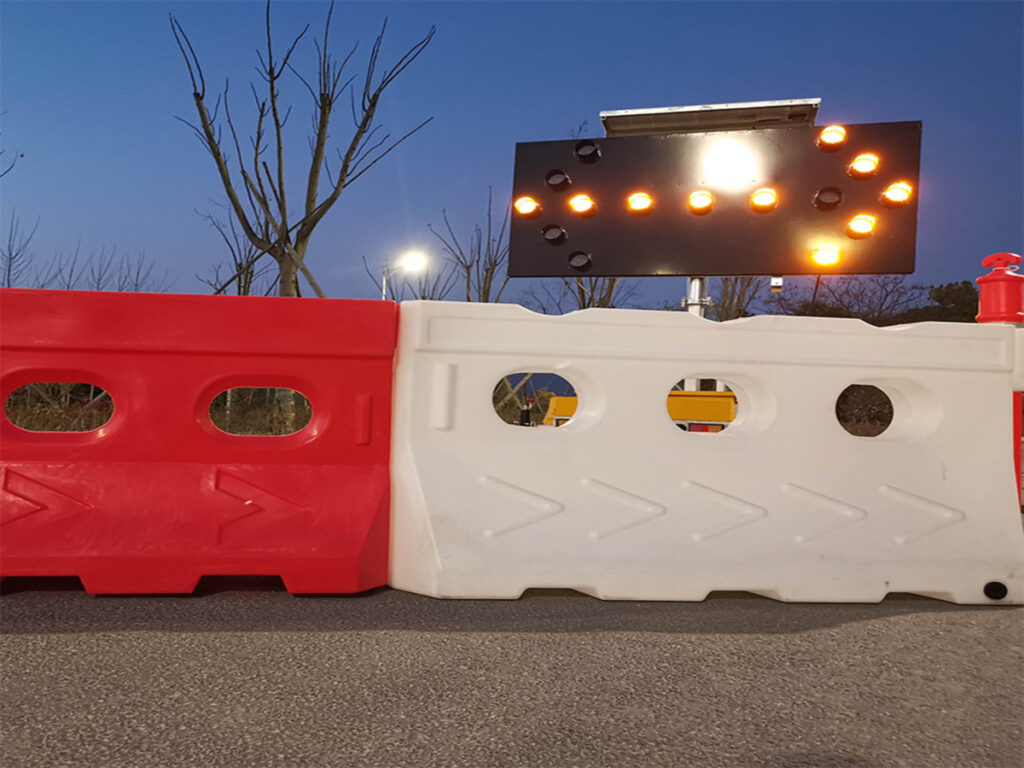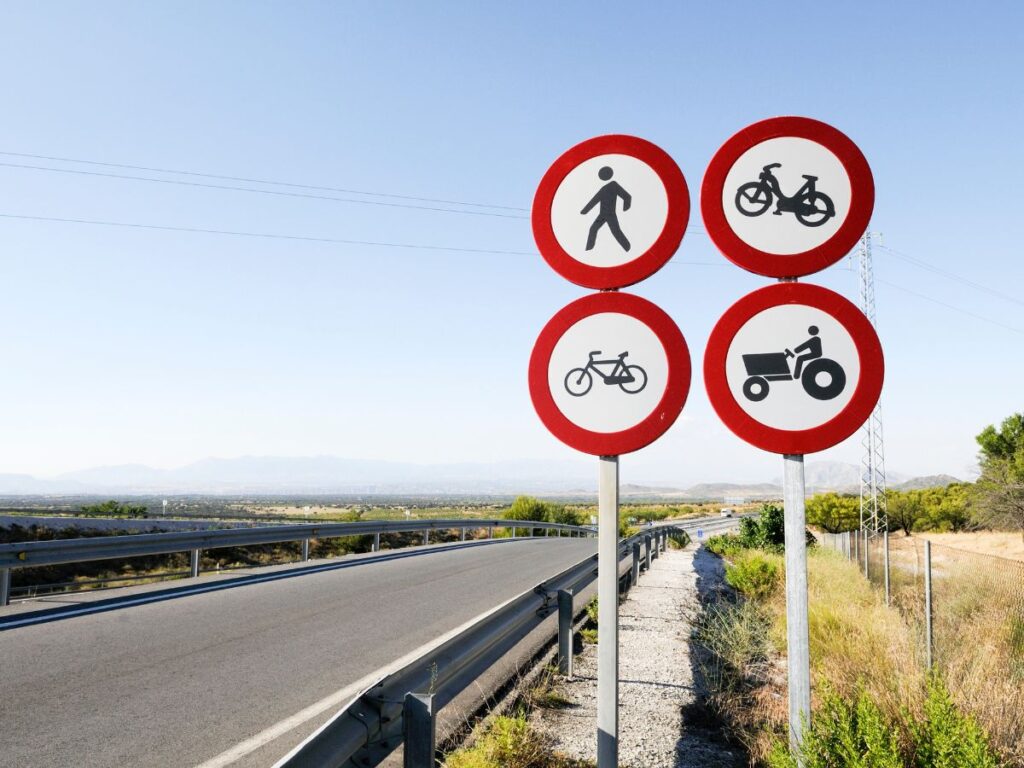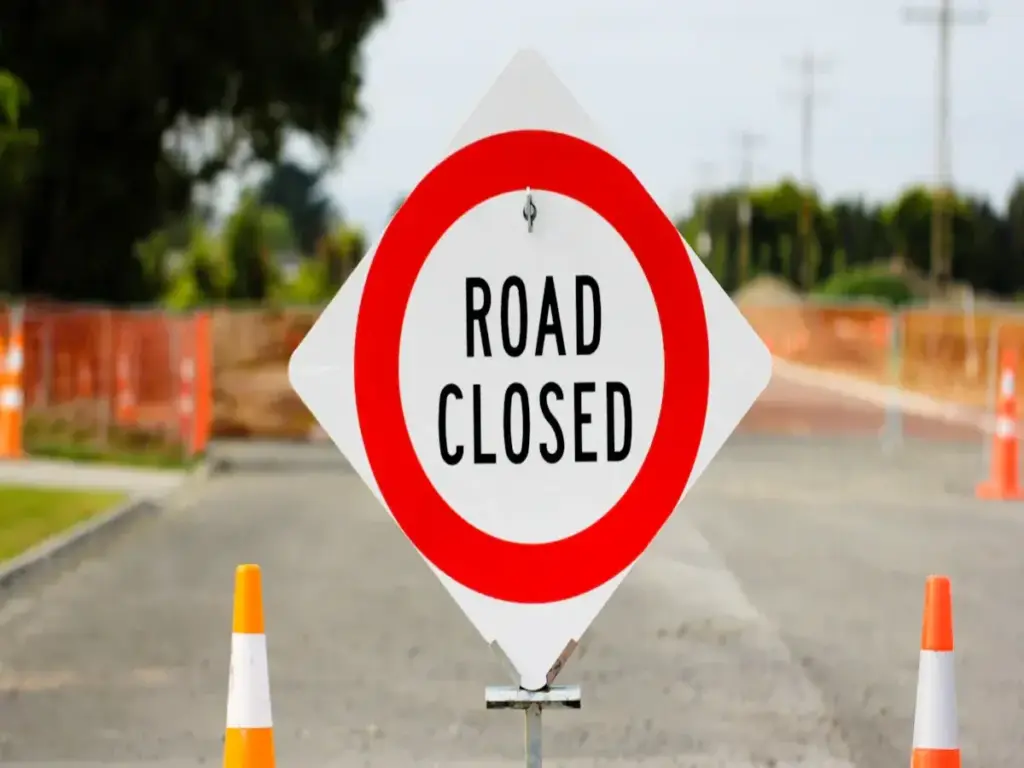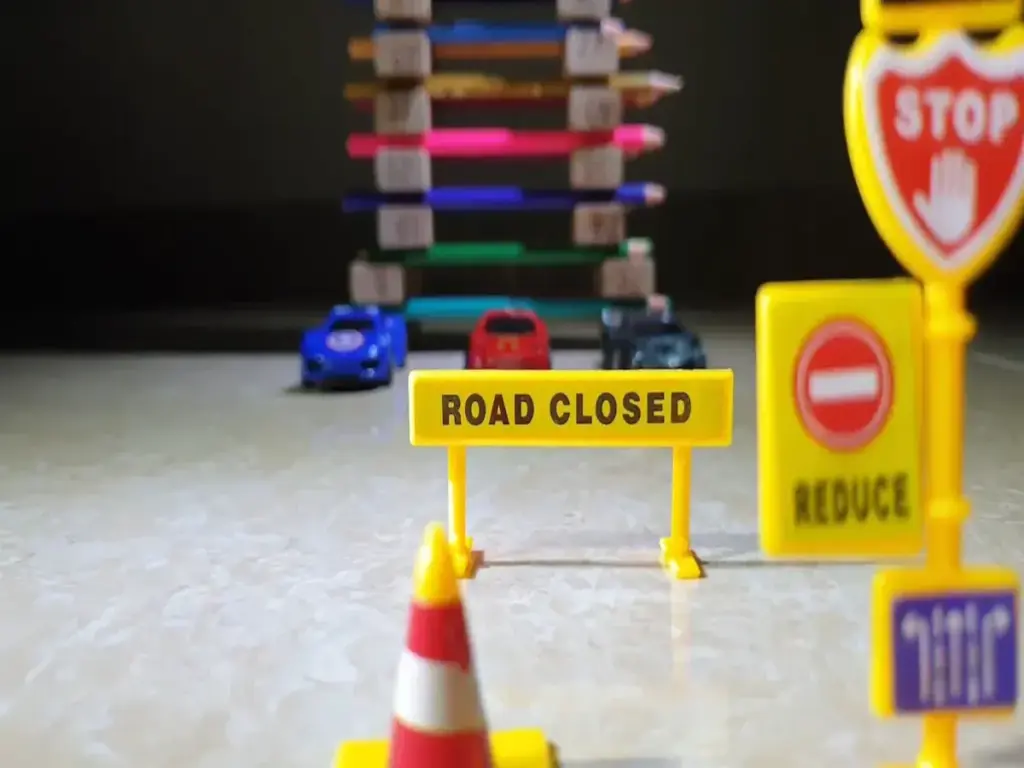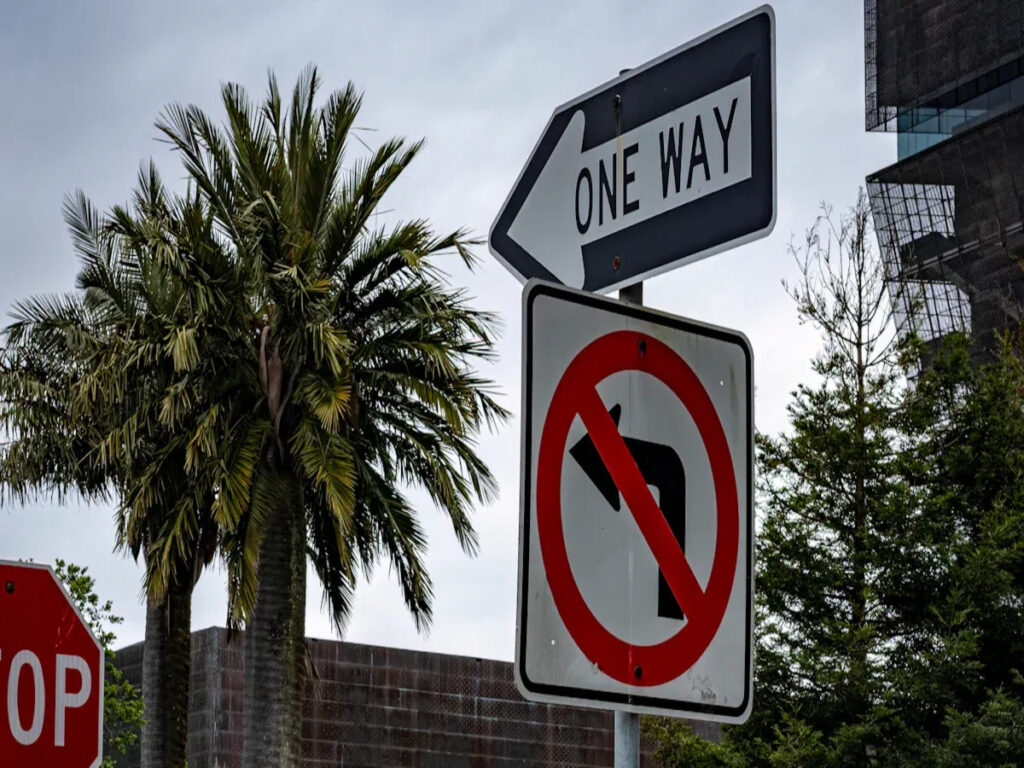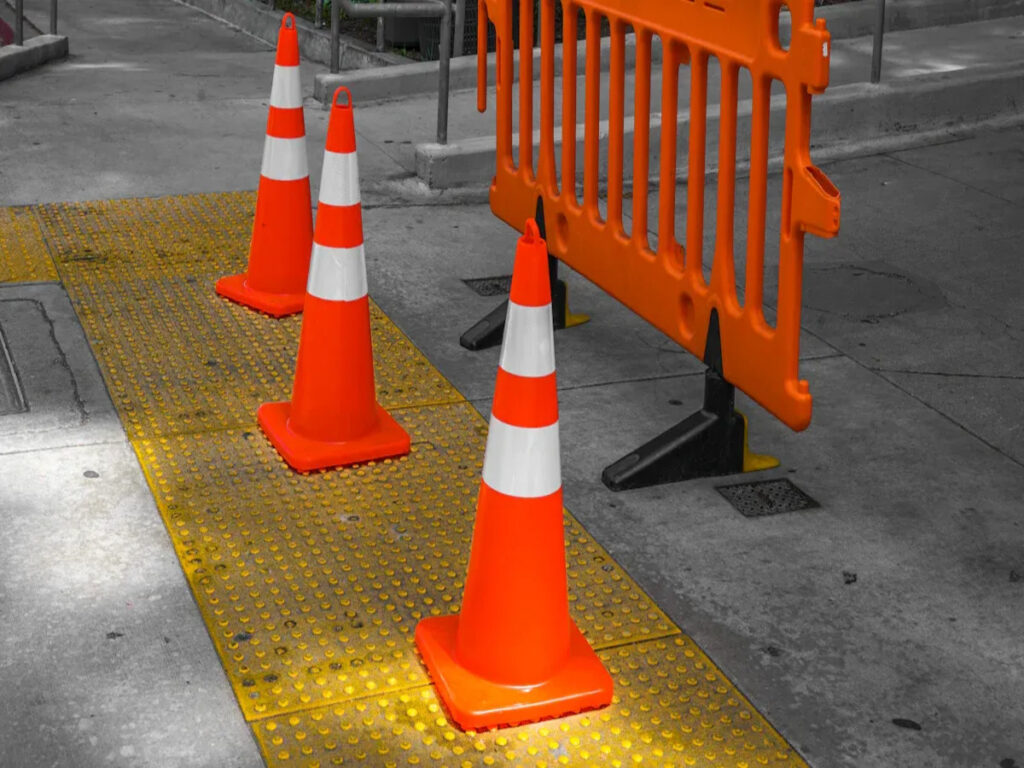
Usted ayuda a mantener las carreteras seguras siguiendo las Manual en dispositivos de control de tráfico uniformes (Muescato). Cada EE.UU.. El estado debe utilizar estas reglas para el control temporal del tráfico.. La siguiente tabla muestra cómo los estados hacen esto.:
| Categoría de adopción | Número de Estados/Entidades | Porcentaje de 50 Estados |
|---|---|---|
| Estados que adoptan plenamente el MUTCD nacional | 18 | 36% |
| Estados que adoptan suplementos al MUTCD | 22 + corriente continua + Puerto Rico + Departamento de Defensa | N / A |
| Estados que adoptan sus propias ediciones | 10 | N / A |
Cuando sigues las reglas temporales de control de tráfico de mutcd, ayudas a detener los cambios repentinos de carril. También ayudas a proteger a los trabajadores. Estas reglas guían a todos de manera segura a través de las zonas de trabajo.. Conos de tráfico son herramientas simples pero muy importantes. Marcan peligros y muestran a los coches por dónde ir. Esto los convierte en claves para la seguridad y el cumplimiento de las normas..
Control de llave
- Cada EE.UU.. el estado debe usar reglas MUTCD. Estas reglas ayudan a mantener seguras las zonas de trabajo. También protegen a conductores y trabajadores.
- Las zonas temporales de control de tráfico tienen cuatro partes principales.. Estas son advertencias anticipadas, transición, actividad, y terminación. Estas piezas ayudan a guiar el tráfico de forma segura..
- Los conos de tráfico deben seguir los estándares MUTCD. Necesitan el color correcto, tamaño, y reflectividad. Esto ayuda a que la gente los vea., incluso de noche o en carreteras muy transitadas.
- Los trabajadores necesitan formación periódica. La gente debe revisar los conos y las zonas de trabajo con frecuencia.. Esto ayuda a detener accidentes y mantiene las herramientas de seguridad funcionando bien..
- Los estados deben seguir cuidadosamente las reglas de MUTCD. Deberían trabajar con agencias locales.. Esto ayuda a que el tráfico se mueva sin problemas.. También mantiene las carreteras legales y seguras para todos..
Conceptos básicos del control de tráfico temporal de MUTCD
Descripción general de los estándares nacionales
Sigue el MUTCD porque establece el estándar nacional para todos los dispositivos de control de tráfico en los Estados Unidos.. Esto incluye señales, señales, y marcas utilizadas tanto en situaciones permanentes como temporales.. Los principales objetivos de la Pautas de control de tráfico temporal de MUTCD son para mantener a todos a salvo, reducir la confusión, y asegúrese de que las zonas de trabajo funcionen sin problemas. Cuando utilizas estos estándares, ayudas a proteger a los conductores, peatones, y trabajadores. El MUTCD también le ayuda a planificar zonas de trabajo para que el tráfico siga avanzando y la gente sepa qué esperar..
Consejo: El MUTCD exige personas capacitadas para velar por la seguridad en las zonas de trabajo. Estas personas pueden dejar de trabajar si ven condiciones inseguras.
La ley federal dice que cada estado debe seguir el MUTCD o una versión que se ajuste estrechamente a él.. Si un estado no cumple, puede perder fondos federales y enfrentar problemas legales. También debes actualizar tus prácticas cuando cambie el MUTCD.. Esto mantiene sus carreteras seguras y actualizadas.
Cuatro áreas de control clave
Cuando configura una zona de control de tráfico temporal mutcd, Utiliza cuatro áreas principales para guiar el tráfico de forma segura.:
- Área de advertencia anticipada: Usted coloca carteles aquí para informar a los conductores sobre la zona de trabajo más adelante.. Esto les da tiempo para reducir la velocidad o cambiar de carril..
- Área de transición: Utiliza conos o barreras para desviar el tráfico de su trayectoria normal y llevarlo a una ruta segura alrededor de la zona de trabajo..
- Área de actividad: Aquí es donde sucede el trabajo.. Protege a los trabajadores y guía el tráfico con marcas y dispositivos claros.
- Área de terminación: Ayuda a los conductores a volver al flujo de tráfico normal después de pasar la zona de trabajo..
Cada área tiene un trabajo especial.. Juntos, ellos advierten, guía, proteger, y luego despejar el tráfico. Esta configuración paso a paso reduce los riesgos para todos en el camino.
Pasos de implementación estatal
Adopción y personalización
Hay algunas formas de utilizar el MUTCD en su estado.. La mayoría de los estados eligen una de tres opciones:
- Algunos estados utilizan el MUTCD nacional sin cambios.. Siguen todas las reglas federales..
- Algunos estados utilizan el MUTCD nacional pero agregan un suplemento estatal. Este suplemento tiene reglas adicionales o actualizaciones para las necesidades locales..
- Algunos estados crean su propio MUTCD. Su versión aún debe coincidir con las ideas principales del MUTCD nacional.. Puede tener más detalles o reglas estatales especiales..
Estados como California y Texas tienen sus propias ediciones.. Nueva York y Nueva Jersey añaden suplementos estatales. La mayoría de los demás estados utilizan el MUTCD nacional sin cambios.. La ley federal le da hasta dos años para utilizar nuevas ediciones, como la 11ª edición de 2023. Esta regla le ayuda a mantener el control de tráfico temporal mutcd seguro y actualizado..
Nota: Es necesario equilibrar las necesidades locales con los estándares nacionales.. Demasiados cambios pueden confundir a los conductores y provocar sanciones..
Capacitación y seguimiento
Debes entrenar a tu equipo sobre las reglas más nuevas de MUTCD.. Los mejores programas de entrenamiento son fáciles de seguir y te permiten aprender a tu propio ritmo.. Usan ejemplos de la vida real y palabras simples.. Hay cursos para socorristas., trabajadores de la carretera, y oficiales de seguridad. Estos programas enseñan sobre alerta anticipada., bloqueando, alta visibilidad, y control de tráfico manual.
- La formación a menudo incluye:
- Lecciones en línea para diferentes trabajos., como el fuego, policía, y el ccsme.
- Practique la configuración de zonas de trabajo.
- Actualizaciones sobre nuevos dispositivos y reglas de seguridad..
También necesitas revisar tus zonas de trabajo con frecuencia.. Las comprobaciones periódicas le ayudan a detectar y solucionar problemas rápidamente. Los estados deben revisar y actualizar sus pasos cada vez que cambia el MUTCD. La Administración Federal de Carreteras te da dos años para realizar estas actualizaciones. Mantenerse actualizado mantiene las carreteras seguras y le ayuda a conservar los fondos federales.
Elementos clave de cumplimiento
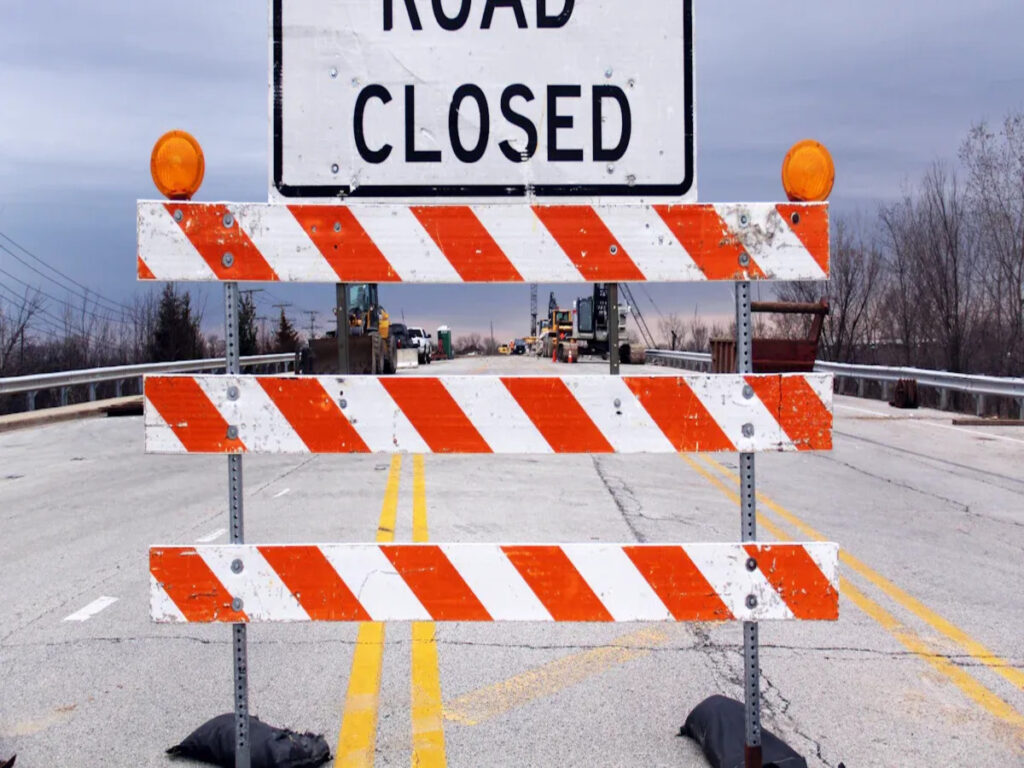
Diseño y colocación del dispositivo
Debes utilizar los dispositivos adecuados y colocarlos en los lugares correctos.. Esto le ayuda a seguir las reglas de control de tráfico temporales de mutcd.. El Capítulo 6F de MUTCD enumera las cosas importantes que debe hacer. La siguiente tabla explica las reglas principales y lo que significan.:
| Elemento de cumplimiento | Descripción |
|---|---|
| Tipos de dispositivos y necesidades del usuario | Los dispositivos deben ayudar a todos los usuarios de la vía, como conductores, ciclistas, peatones, y personas con discapacidad. |
| Resistencia al choque | Los dispositivos deben cumplir estándares de seguridad como NCHRP 350 o puré 2016. Necesitas pruebas de que tus dispositivos son seguros para cada proyecto. |
| Definición de dispositivos de control de tráfico | Esto significa todos los signos., señales, marcas, y dispositivos que guían o advierten a las personas en la carretera. |
| Características generales de los signos | Los letreros deben usar los colores y formas correctos.. Las señales de advertencia son negras y naranjas.. Las señales guía utilizan colores estándar. |
| Señales de control de tráfico temporales | Utilice señales sólo si funcionan mejor que otras formas.. Ponlos en lugares seguros y sigue la ley.. |
| Barreras de tráfico temporales | Las barreras deben impedir que los coches entren en las zonas de trabajo. También protegen a trabajadores y personas en la vía. |
| Requisito de cumplimiento | Todos los dispositivos deben seguir las reglas MUTCD para la construcción., mantenimiento, utilidad, o trabajo incidente. |
Cuando planificas una zona de trabajo, Piensa en el área y quién usa la carretera.. Buenos dispositivos en los lugares correctos ayudan a los conductores a ver los cambios temprano. Esto detiene la confusión. Señales claras, conos de trafico, y las barreras reducen la posibilidad de accidentes.
Seguridad de los trabajadores y usuarios de la carretera
Mantienes seguros a los trabajadores y usuarios de la carretera siguiendo estas reglas. Colocar los dispositivos en el lugar correcto ayuda a que el tráfico se mueva bien. También detiene los cambios bruscos de carril.. Los dispositivos brillantes y fáciles de ver reducen la posibilidad de accidentes. Los estudios demuestran que los abanderados, luces intermitentes, y las marcas claras en el pavimento ayudan a los conductores a tomar buenas decisiones. Estas herramientas ayudan a detener el exceso de velocidad y el seguimiento excesivo.
Debes revisar tus zonas de trabajo con frecuencia.. Asegúrese de que todos los dispositivos estén en buen estado y en el lugar correcto. Cuando utiliza reglas de control de tráfico temporales mutcd, haces que las carreteras sean más seguras para todos.
Conos de tráfico en MUTCD Control de tráfico temporal
Especificaciones y requisitos
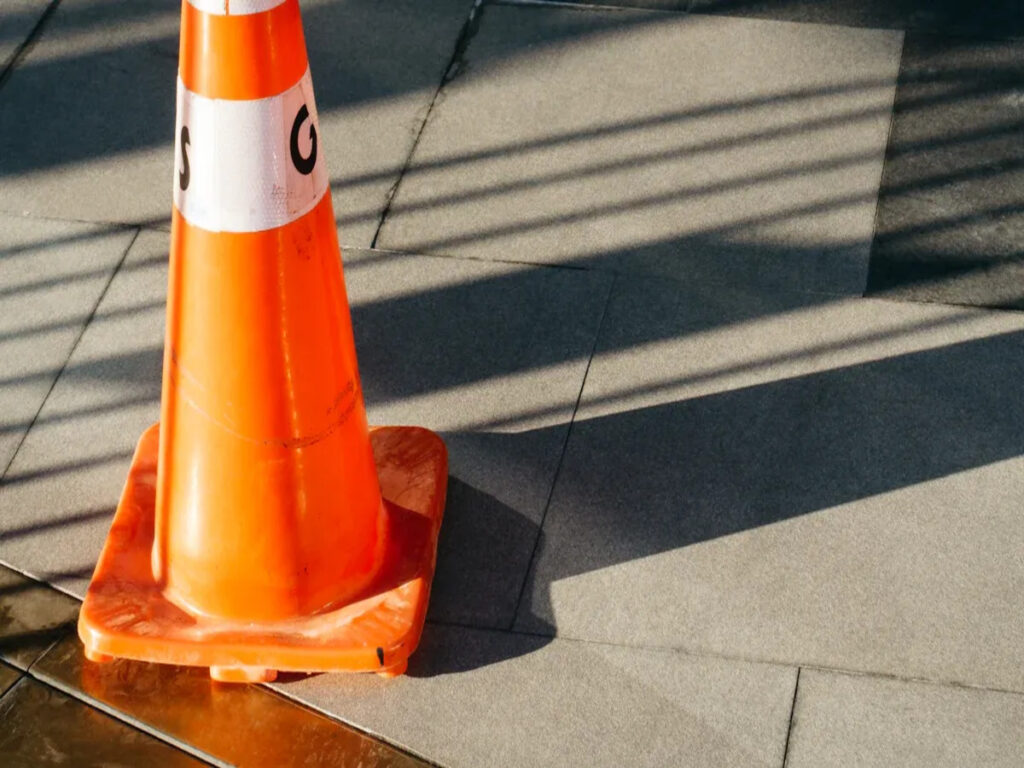
Los conos de tráfico ayudan a que las zonas de trabajo sean seguras. El MUTCD tiene reglas sobre cómo deben verse y funcionar los conos. Debes utilizar conos que cumplan estas reglas para seguir control de tráfico temporal mutcd pautas.
| Aspecto | Detalles del requisito |
|---|---|
| Color | Predominantemente naranja |
| Material | Flexible, durable (como CLORURO DE POLIVINILO), no daña los vehículos en caso de impacto |
| Altura mínima | 18 pulgadas para carreteras bajo 45 mph 28 pulgadas para carreteras 45 mph o más 36 Se recomiendan pulgadas o más para autopistas urbanas concurridas |
| Bandas reflectantes | Para 28–Conos de 36 pulgadas: 6-banda blanca de 3 a 4 pulgadas desde la parte superior + 4-banda blanca de pulgadas 2 pulgadas debajo Para conos 36 pulgadas o más altas: Es posible que se necesiten bandas adicionales según las reglas locales. |
| Citación MUTCD | “Los conos serán predominantemente de color naranja y estarán hechos de un material que pueda golpearse sin causar daños al vehículo que impacta.” – MUTCD 6F.64.02 |
Necesitas conos con bandas retrorreflectantes para trabajos nocturnos u oscuros.. Estas bandas ayudan a los conductores a ver los conos desde lejos. Los conos más altos son mejores para autopistas y caminos muy transitados. Son más fáciles de ver y no se caen tanto..
Consejo: Siempre revise los conos de su carretera antes de establecer una zona de trabajo.. Asegúrate de que las bandas estén limpias y los conos no estén rotos..
Algunos conos de tráfico ahora tienen GPS, LED, y sensores. Estas funciones le ayudan a saber dónde están los conos y hacerlos más fáciles de ver.. Algunos conos pueden enviar alertas si un coche los atropella. Esto le ayuda a solucionar problemas rápidamente. Estas nuevas herramientas te ayudarán a seguir control de tráfico temporal mutcd reglas y mantener a las personas seguras.
Colocación y visibilidad
Debes poner conos en los lugares correctos para guiar a los conductores y proteger a los trabajadores. Los conos te ayudan a mover el tráfico, carriles divididos, y mostrar caminos seguros en las zonas de trabajo.
| Aspecto | Detalles |
|---|---|
| Color y material del cono | Naranja; flexible y seguro para los vehículos |
| Altura del cono | 18 pulgadas para carreteras de baja velocidad; 28 pulgadas para carreteras; 36 pulgadas o más para áreas concurridas o de alta velocidad |
| Mejoras de visibilidad | Bandas o luces retrorreflectantes para trabajo nocturno. |
| Funciones | Canalizar a los usuarios de la vía; dividir carriles; marcar zonas de trabajo a corto plazo |
| Espaciado | Basado en el límite de velocidad; más juntos por la noche o con mal tiempo |
| Estabilidad | Las bases con peso o los sacos de arena evitan que los conos se muevan |
| Mantenimiento | Limpie y reemplace los conos según sea necesario; mantener las bandas visibles |
| Canalización del rol del dispositivo | Advertir y guiar a los conductores.; Separar el tráfico de las zonas de trabajo o de los peatones. |
Usas conos de tráfico para hacer velas.. Las puestas en marcha ayudan a mover el tráfico de un carril a otro. El MUTCD da reglas sobre la longitud que deben tener los conos y la distancia entre ellos para colocar los conos.. Por la noche, pones los conos más juntos para que los conductores puedan ver mejor. Los espacios de amortiguamiento ayudan a mantener los automóviles alejados de los trabajadores.
Nota: Revisa tus conos con frecuencia. Reemplace los conos que estén sucios, roto, o bandas faltantes.
Aquí hay algunos consejos para usar los conos de la manera correcta.:
- Utilice conos de 36 pulgadas en autopistas y caminos muy transitados. Son más fáciles de ver y no se caen fácilmente..
- Coloca bandas reflectantes en los lugares correctos.. Coloque una banda de 6 pulgadas cerca de la parte superior y una banda de 4 pulgadas debajo.
- Revisa los conos con frecuencia. Limpiar las bandas y sustituir los conos que estén rotos..
- Utilice bases con peso o sacos de arena para mantener los conos en su lugar..
- Elija el tamaño de cono adecuado para su zona de trabajo. Utilice conos más altos para carreteras rápidas y conos más pequeños para trabajos cortos.
- Configure los conos con el espacio adecuado. Siga las reglas de MUTCD para conos y áreas de amortiguamiento.
- Utilice luces adicionales o conos inteligentes para el trabajo nocturno. Estos ayudan a los conductores a ver mejor la zona de trabajo..
Conos inteligentes puede ayudarle a saber dónde están los conos y enviar alertas si un cono se mueve o es golpeado. Estas características hacen que las zonas de trabajo sean más seguras y le ayudan a seguir control de tráfico temporal mutcd normas.
Superar los desafíos de cumplimiento
Problemas comunes
Es posible que tengas problemas al intentar seguir. control de tráfico temporal mutcd normas. Muchos equipos tienen problemas para mantener los conos limpios y brillantes.. Los conos sucios o descoloridos son difíciles de ver para los conductores por la noche. A veces, los conos no están espaciados de la manera correcta. Si los conos están demasiado cerca o demasiado separados, Los conductores pueden confundirse. Es posible que no vean los cambios de carril a tiempo. Algunos conos están agrietados., roto, o faltan bandas brillantes. Estos problemas pueden hacer que las carreteras sean inseguras y causar problemas legales..
Otros problemas comunes son:
- No avisar a los conductores con suficiente antelación antes de una zona de trabajo.
- No mantener buenos registros de revisiones y reparaciones..
- Usar conos que no se juntan Muescato o Reglas de OSHA.
- No trabajar bien con agencias locales o centros de tráfico.
- No enseñar a los trabajadores las reglas de seguridad más recientes..
- Esperar demasiado para actualizar los pasos cuando el Muescato cambios.
Nota: Los inspectores suelen encontrar desaparecidos, roto, o conos mal colocados durante los controles.
Soluciones y mejores prácticas
Puede solucionar estos problemas siguiendo algunos pasos inteligentes. Limpia los conos de seguridad con agua y jabón para mantenerlos brillantes.. Guarde los conos de pie, en un lugar seco, y fuera del sol. Reemplace los conos de inmediato si tienen grietas., abolladuras, o bandas descoloridas.
Pruebe estos pasos para seguir mejor las reglas:
- Entrene a su equipo con frecuencia sobre cómo colocar conos y mantenerse a salvo..
- Revisa mucho los conos de carretera y otras herramientas.. Reemplace los rotos rápidamente.
- Utilice el tamaño de cono y el espacio adecuados para cada vía y velocidad.
- Escriba todos los cheques, refacción, y nuevas herramientas que compras.
- Utilice conos con señales claras para ayudar a los conductores y a las personas que caminan..
- Utilice conos o bandas brillantes para trabajar de noche..
- Trabajar con agencias locales para que todos utilicen las mismas reglas..
La capacitación y las comprobaciones ayudan a su equipo a aprender las reglas más recientes y detectar problemas tempranamente.. Cuando revisas mucho las zonas de trabajo, mantienes a todos seguros y evitas grandes errores. Mantenerse preparado y organizado le ayuda a cumplir control de tráfico temporal mutcd reglas y hace que los inspectores confíen en usted.
Usted ayuda a mantener las carreteras seguras siguiendo pasos importantes para el control temporal del tráfico.. Primero, Haga un plan simple y trabaje con otros proyectos cercanos.. Utilice conos de carretera para mostrar a los conductores adónde ir en cada paso.. Entrena a tu equipo muchas veces y cambia tus formas cuando cambien las reglas.. Informar a la gente sobre el trabajo para que sepan lo que está sucediendo y puedan tener cuidado.. Revise sus zonas de trabajo con frecuencia y hable con la comunidad para mantener a todos seguros durante mucho tiempo.. 🚧
Preguntas frecuentes
¿Qué significa MUTCD??
MUTCD significa Manual sobre dispositivos uniformes de control de tráfico. Lo utilizas como guía principal para las señales., señales, y marcas en EE. UU.. caminos. Le ayuda a mantener las carreteras seguras y despejadas para todos..
¿Cómo puede Estados Unidos. el estado adopta el MUTCD?
Estados Unidos. El estado puede adoptar el MUTCD a través de varios métodos., incluido:
- Adopción directa: El gobierno estatal adopta el MUTCD en su totalidad como norma estatal.
- MUTCD por referencia: El estado puede hacer referencia al MUTCD en sus leyes sin volver a publicar el documento completo., Asegurar que todos los dispositivos de control de tráfico cumplan con los estándares federales..
- Modificaciones específicas del estado: Los estados pueden hacer modificaciones específicas para adaptarse a las condiciones locales., pero deben asegurarse de que estas modificaciones no entren en conflicto con las pautas federales.
¿Pueden los estados modificar el MUTCD según sus propias necesidades??
Sí, Los estados pueden modificar el MUTCD para satisfacer sus necesidades específicas., siempre y cuando estas modificaciones no reduzcan la efectividad o los estándares de seguridad descritos en el MUTCD. Por ejemplo, un estado podría hacer ajustes para adaptarse a las condiciones de las carreteras locales o escenarios de tráfico únicos, pero estos cambios deben estar en línea con los estándares federales y aprobados por el FHWA.
¿Puedes utilizar cualquier cono de tráfico de color para obras viales??
No, Debes utilizar conos naranjas para la mayoría de las obras viales.. El naranja destaca mejor y cumple con las normas MUTCD. Otros colores pueden confundir a los conductores o infringir las leyes de seguridad..

